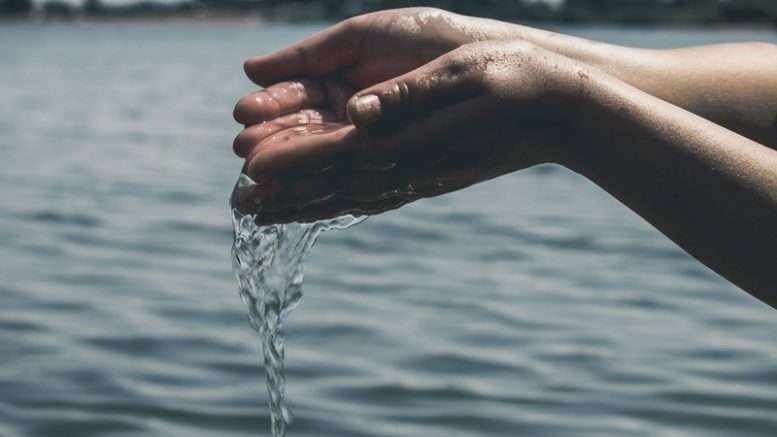I refer to the article “Water is critical to nation’s survival, says DPM Teo, in outlining Singapore’s strategic approach” (Straits Times, Mar 4).
It states that “Water is critical to Singapore’s survival, and the nation has adopted a strategic approach in planning for its water supply, Deputy Prime Minister Teo Chee Hean said on Saturday (March 4).
“Our struggle to make sure our people have water, is the struggle for Singapore’s survival and independence,” said Mr Teo, who is also Coordinating Minister for National Security.
“To make sure that we could survive, preserve our independence and thrive, we have taken a strategic approach to planning for water supply,” he added.
He was speaking at the launch of Singapore’s month-long celebration of World Water Day at Marina Barrage, which embodies the nation’s resolve to develop local water sources so it would not be held to ransom over its water supply.
This strategic approach entailed preparing early for future sources of supply, he said, citing how Singapore prepared “many years in advance” before the expiration of the first water agreement with Malaysia in 2011. When it expired, Singaporeans did not face a disruption in water supply, he noted, and the event passed almost unnoticed.
Its water price already took reference from the marginal cost of water – what it would cost to replace the water should this first agreement not be renewed. And today, it has a robust, diversified water supply with four “national taps” – from local catchment, imported water from Johor, Newater and desalinated water.
In the same vein, Singapore must prepare now for 2061 – 44 years away – when the second water agreement with Malaysia, which currently meets half the island’s water needs, expires, Mr Teo said.
It has invested $7 billion – about $430 million every year – in water infrastructure from 2000 to 2015. This figure will nearly double to $800 million every year between 2017 and 2021, to fund major investments in water plants, pipes, and pumps.
Besides preparing for the future, DPM Teo also warned of a more immediate worry.
Johor’s Linggiu Reservoir, which feeds into the Johor River from which Singapore draws its supply, is only one-third full and there is a danger of it failing in prolonged dry weather.
“This water source is under stress,” he said.
“So we must prepare psychologically to face water shortages if the Linggiu Reservoir fails and dries up, and our reservoirs here also face a very dry year.”
Mr Teo’s speech comes at the end of a week of intense debate in Parliament on the Budget where a key focus was on the water price hike, and where three ministers explained how water is a matter of national security, and had to be priced right to reflect its strategic importance and scarcity.”
$14.9b Budget surpluses from 2000 to 2015?
The Budget surpluses from 2000 to 2015 was about $14.9 billion.
Despite spending $7b on water infrastructure – $14.9b surpluses?
So, despite spending – “invested $7 billion – about $430 million every year – in water infrastructure from 2000 to 2015” – we still ended up with $14.9 billion of surpluses.
“Will nearly double to $800 every year between 2017 and 2021”?
As to “This figure will nearly double to $800 million every year between 2017 and 2021, to fund major investments in water plants, pipes, and pumps” – the Budget surpluses for the last five years from 2012 to 2016 was about $7.1 billion.
Projected increase in spending next 5 years – $1.9b?
Therefore, the projected increase in spending due to the doubling of spending to $800 million every year between 2017 to 2021 works out to about $1.9 billion ($800 – $430 x 5).
May still end up with Budget surpluses of $5.2 b next 5 years?
So, if the Budget surpluses for the next five years from 2017 to 2021 is about the same as the last five years ($7.1 billion) – we may still end up with Budget surpluses of about $5.2 billion ($7.1 – $1.9) in the next five years.
Includes Transfers to Trust and Endowment Funds?
But since the above Budget surplus data include Transfers to Trust and Endowment Funds which under IMF fiscal reporting guidelines should not be charged as one-time expenditures in the Budget – the Budget surpluses may actually be much higher.
FY2016 – Budget surplus $5.2 or $8.8b?
For example, if we add back the Trust and Endowment Funds of $3.6 billion – the Budget surplus would rise from $5.2 billion to $8.8 billion in FY2016.
Budge Cash Surplus from 2005 to 2014 – $190b?
According to the Department of Statistics’ Monthly Digest of Statistics – the total Budget Cash Surplus/Deficit (M130611 – Government Finance, Annual) from 2005 to 2014 was $190 billion (I added up the yearly figures).
So, if we follow the full IMF fiscal reporting guidelines – does it mean that our Budget Cash Surpluses from 2005 to 2014 was about a whopping $190 billion?
Latest new reason for the increase in water prices – does not ‘hold water’?
In the final analysis – does this latest, arguably yet another new reason to justify the increase in water prices – ‘hold water’?
Leong Sze Hian
